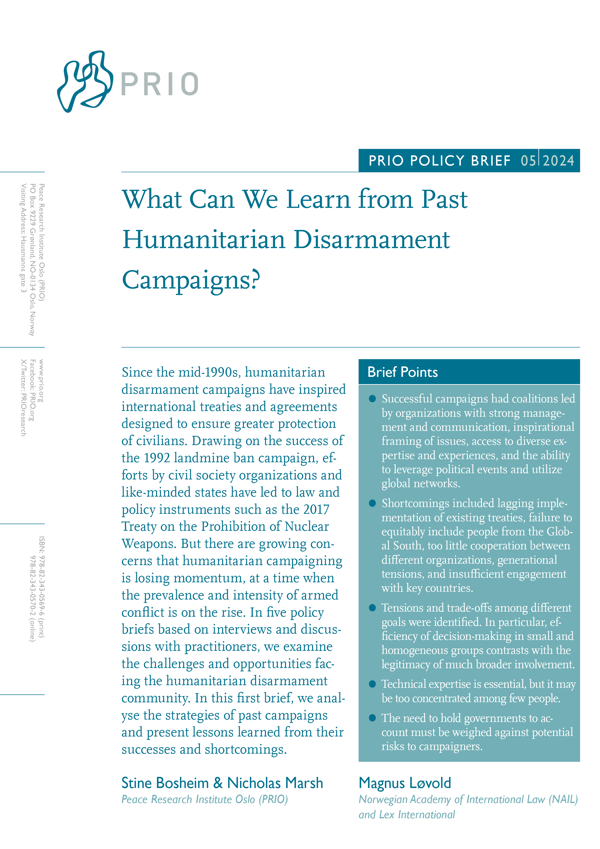Since the mid-1990s, humanitarian disarmament campaigns have inspired international treaties and agreements designed to ensure greater protection of civilians. Drawing on the success of the 1992 landmine ban campaign, efforts by civil society organizations and like-minded states have led to law and policy instruments such as the 2017 Treaty on the Prohibition of Nuclear Weapons. But there are growing concerns that humanitarian campaigning is losing momentum, at a time when the prevalence and intensity of armed conflict is on the rise. In five policy briefs based on interviews and discussions with practitioners, we examine the challenges and opportunities facing the humanitarian disarmament community.
In this first brief, we analyse the strategies of past campaigns and present lessons learned from their successes and shortcomings.









